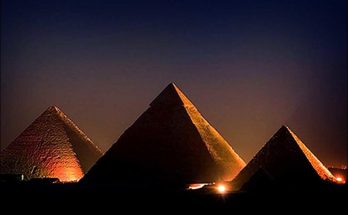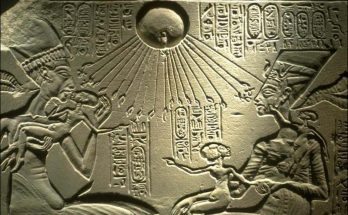The changeless blue of the Egyptian sky, the strictly regular return of all the natural phenomena connected with the Nile, that wonderful stream of the land’s life, are entirely in accord with the fixedness of Egyptian civilization in all its branches.
Though the high state of advance which we first find in Egyptian art, three thousand years before the Christian era, must necessarily have been preceded by less perfected degrees, it is wholly impossible to perceive such stages of development in any of the monuments known. After Egypt had attained a certain height of civilization, its history, during the thousands of years known to us, shows none of those phases of advance or decline, of development in short, to be observed in Europe during every century, if not during every decade.
The Egyptian completed buildings and statues begun by his remote ancestors without the slightest striving for individual peculiarity. He commenced new works in the same spirit, leaving them for similar execution by his great-grandchildren. Numberless generations thus dragged on without bequeathing a trace of any peculiar character and ability. It is only by the cartouches of the kings in the hieroglyphic inscriptions that it is possible to separate the dynasties, and to group into periods of a thousand years or more, works of art which seem from their style to belong to one and the same age.
What gigantic revolutions have affected the civilization of Europe during the fourteen centuries elapsed since the overthrow of the Roman Empire, and how slight are the appreciable changes during the nearly equal number of years of the ancient dynasties of Memphis–the period of the pyramids, or again of the Theban kingdom–from the seventeenth dynasty to the rule of the Ptolemies!
Views: 160



